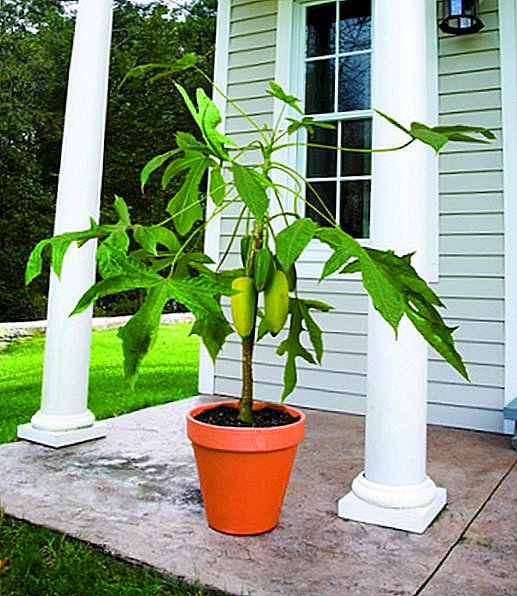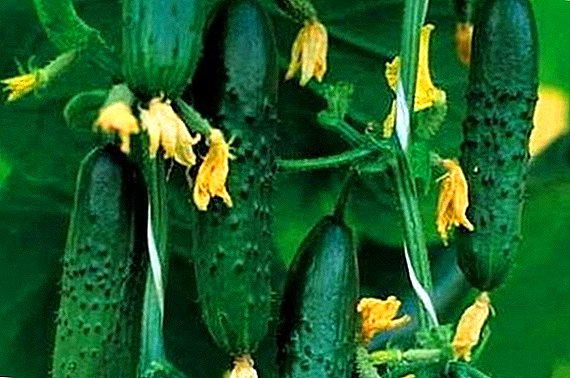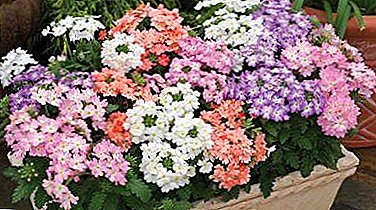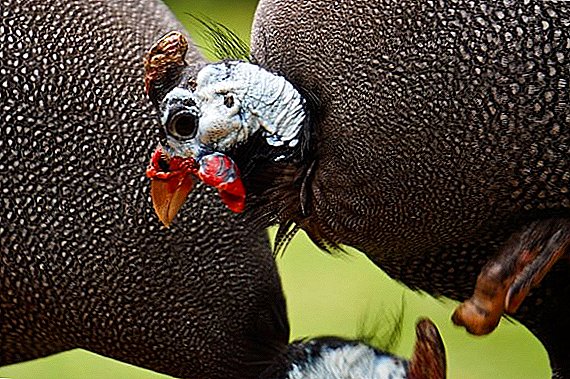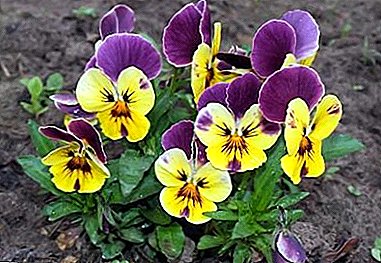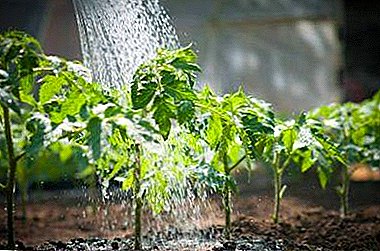
Tomatoes - one of the most common crops in our country. They are very useful and tasty, and also contain a lot of vitamins.
From these vegetables make a variety of salads. They marinate and salt. Ketchups, tomato pastes and juices, as well as many other dishes are made from fresh fruits.
Heat-loving tomatoes are very fond of water. You need to know how to water the tomatoes. This knowledge will save your vegetables from premature decay and wilt.
The importance of proper irrigation of plants
 Tomatoes will develop well if you pay attention to the "correct" watering. They love moisture and will thank you with ripe fruits. Fine, if before you water the plants, you will spend mulching. In order not to accidentally destroy the young seedlings, carefully direct the water to the very center of the row spacing.
Tomatoes will develop well if you pay attention to the "correct" watering. They love moisture and will thank you with ripe fruits. Fine, if before you water the plants, you will spend mulching. In order not to accidentally destroy the young seedlings, carefully direct the water to the very center of the row spacing.
The consequences of improper watering after planting tomatoes can be very pitiable. So, if you make the plants a cold shower on a hot day, then you risk a shock. With very strong moisture, tomato roots are affected by harmful bacteria.. And if watering is not enough, the flowers fall off and the small ovary falls off.
Basic principles:
Frequency
How best to water tomato seedlings after planting? This crop loves to drink, so water the roots of tomatoes well.
It is better to moisturize the ground every day at dawn and after sunset. In cloudy weather, choose for this any time. Here it is important not to make a mistake with the number of buckets poured into the soil. A lot is bad. Little is worse.
Water temperature
The best water for this purpose is room temperature water. To do this, on a hot day, you can pour water into a barrel in the courtyard, or into any other free tank of water, which will heat up by the end of the day. The minimum temperature for watering seedlings - twenty degrees.
Instruments
You can use any tools. Water from a watering can, bucket, or hose. Useful droppers with different irrigation systems. Well, if there is a well, or a column.
Volumes of fluid
For the first time, water the seedlings of tomatoes in the greenhouse, preferably a couple of days after they grow.. If the seedlings of tomatoes are planted in the holes, then here with irrigation is even easier. Focus on about three liters of moisture. If your tomatoes ripen in a trench, it is better to calculate the number of buckets by the number of seedlings.
How to water after planting seeds?
Before transfer to ground
 Usually, tomato seeds are planted in winter, and in late February, tomato seedlings appear. The most convenient place for her in the apartment is a greenhouse on the windowsill. Try to nourish the seeds of the plant with moisture.
Usually, tomato seeds are planted in winter, and in late February, tomato seedlings appear. The most convenient place for her in the apartment is a greenhouse on the windowsill. Try to nourish the seeds of the plant with moisture.
How often should the seedlings be watered at home before landing on the ground? You can from time to time spray the shoots from the sprayer.
It is also very good to hang a wet towel on the battery under the window sill so that the evaporation from it will moisten the air in the room where your tomatoes grow.
For seedlings in the ground
In the period of occurrence of the ovary, the land on which the tomatoes are planted should be optimally hydrated. Therefore, make sure that the seedlings get enough moisture. Should be irrigated seedlings moderately. And do it regularly from the beginning of the ovary and until the appearance of the fruit.
If you do not pay enough attention to watering tomatoes, then ripe fruits from a lack of moisture can crack. Also, the leaves of dryness curl and blacken.
For greenhouse bushes
Tomatoes in the greenhouse is better to "freshen up" with a sprayer. About once a month it is worth adding organic fertilizer to the water for irrigation. And, of course, a lot depends on the time of year. In spring, it is enough to wet the earth once every ten days. But in the summer it should be done more often. Once every five days.
For maximum convenience, place in a greenhouse covered with a film barrel with water. When sprouts sprout, start watering them. After two weeks, the plants will get stronger, and you can water them a second time. Water the tomatoes under the roots and pour the water gently. After that, wait until the earth is saturated with moisture, and loosen it a little. Well, the last time is to irrigate the tomatoes about two weeks before harvest.
How to determine the need for irrigation?
This can be done very simply. Where you have watered the soil, dig a small hole in the ground. Gather the earth in your palm and squeeze it a little in your hands. If earthen lumps are compressed, and then easily scattered, then the moisture of the earth is sufficient. If the soil is dense and absorption is slow, it can be further accelerated with garden tools.
For example, if you pick up a pitchfork and make punctures between the rows, the water will be absorbed much faster. And the result can be seen next week. Seedlings will become juicy. However, here you need to try and do this operation at least three times. Tomatoes are very fond of wet landand very hard ground will only aggravate their condition.
Drip moisturizing
Drip irrigation is a gradual process of moistening the earth in small portions of water. Literally, drop by drop. The easiest way to organize such an action is through plastic bottles. The easiest way to do this is while you are planting plants in a greenhouse. The original "innovation" significantly saves the amount of liquid consumed by vegetables. It does not harm the ground at all and, most importantly, helps to avoid the ingress of moisture on young leaves.
 The process of drip irrigation of tomatoes is not difficult:
The process of drip irrigation of tomatoes is not difficult:
- Take a plastic bottle and above all, wash off the sticker with it.
- Using a pair of scissors, or a regular table knife, cut the bottle slightly above the separating strip.
- Do not cut the bottom of the container to the end. It will be an "umbrella" and protect moisture from evaporation.
- In the lid of your container, make three, or even four holes with a red hot nail. If there are many holes, the water will flow out quickly to the ground. If there are not enough of them, then moisture will linger in a plastic container. The seedling will dry out.
- Cap the bottle and turn it over so that it is tilted to the ground. Check the flow of fluid from the bottle.
- Bury the bottle in the ground, tilt it slightly. Tamp the pit and fill the plastic with water.
You can also use another method of drip irrigation. It is enough to take a few plastic bottles and bury them with your neck up at the very roots of the young seedlings. Before digging plastic containers into the ground, make five bottles in the bottles, or six holes in two rows at the same distance from each other.
The disadvantage of this method is that you will need to pour the liquid into the narrow neck of the bottle. However, a significant advantage - the capacity will not carry the wind. As well as the danger of evaporation of moisture can be reduced to zero. In any case, whichever way you choose, regularity and sufficient moistening of the earth is a guarantee of a beautiful tomato crop in future!
The more attention you pay to watering your seedlings at the very beginning, the more likely you are to have a wonderful harvest. Only careful care of tomatoes can eventually bring good results in the literal sense of the word. After all, ripe, large and beautiful tomatoes on the table - this is pride and great joy.





